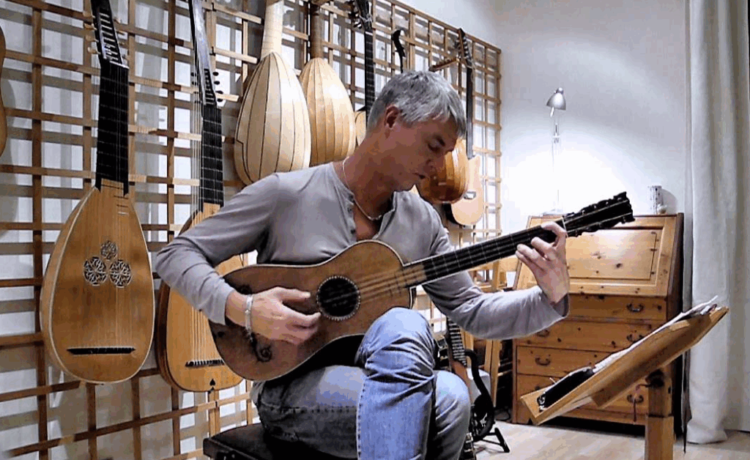Last night, while the home team lost the big game on TVs at a local dive bar, my noisy rock band opened for a chamber pop ensemble. Electric guitars and feedback gave way to classical acoustics, violin, piano, accordion, and even a saw. It was an interesting cultural juxtaposition in an evening of cultural juxtapositions. The sports and music didn’t gel, but an odd symmetry emerged from the two bands’ contrasting styles, to a degree. The instrument above, on the other hand, would have fit right in with the second act, whose old world charm would surely find a place for a 1679 guitar—one crafted by the legendary master luthier Antonio Stradivari, no less.
If you know nothing at all about music or musical instruments, you know the name Stradivari and the violins that bear his name. They are such coveted, valuable objects they sometimes appear as the target of crime capers in the movies and on television. This Stradivarius guitar, called the “Sabionari,” is even rarer than the violins. The Stradivari family, writes Forgotten Guitar, “produced over 1000 instruments, of which 960 were violins.” Yet, “a small number of guitars were also crafted, and as of today only one remains playable.” Highly playable, you’ll observe in these videos, thanks to the restoration by luthiers Daniel Sinier, Francoise de Ridder, and Lorenzo Frignani.
In the clip just above, Baroque concert guitarist Rolf Lislevand plays Santiago de Murcia’s “Tarantela” on the restored guitar, whose sonorous ringing timbre recalls another Baroque instrument, the harpsichord.
So unique and unusual is the ten-string Stradivarius Sabionari that it has its own website, where you’ll find many detailed, close-up photos of the elegant design as well as more music, like the piece above, Angelo Michele Bartolotti’s Suite in G Minor as performed by classical guitarist Krishnasol Jiménez, who, along with Lislevand, has been entrusted with the instrument for many live performances. Owned by a private collector, the Sabionari very often appears at lectures on restoration and conservation of classical instruments, as well as in performances around Europe. You’ll find on sabionari.com many more videos of the guitar in action (like that below of guitarist Ugo Nastrucci improvising), links to exhibits, descriptions of the challengingly long neck and Baroque tuning, and a sense of just how much the Sabionari gets around for such a rare, antique instrument.
Note: An earlier version of this post appeared on our site in 2016.
Related Content:
Why Violins Have F‑Holes: The Science & History of a Remarkable Renaissance Design
Josh Jones is a writer and musician based in Durham, NC.















